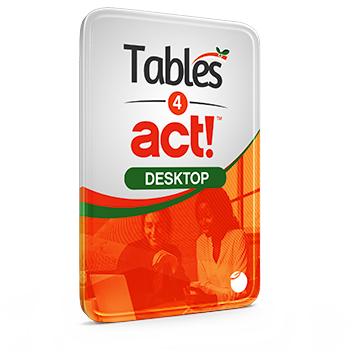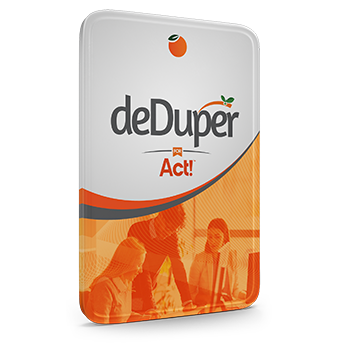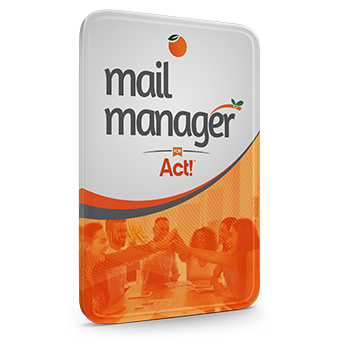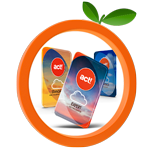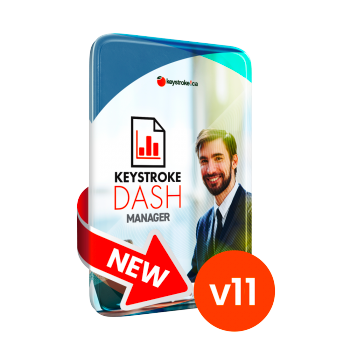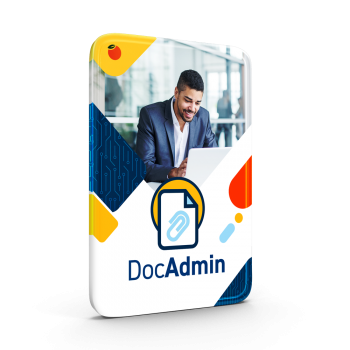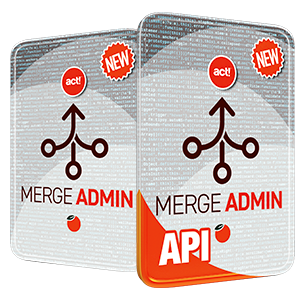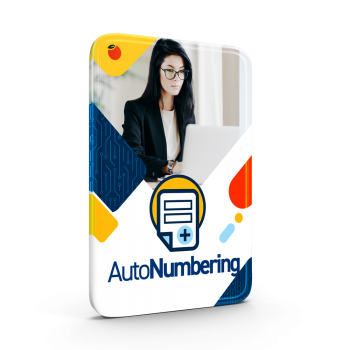Search Engine Optimization is something every website should do. By optimizing a website for search engines, you increase your chances of higher rankings, which improves the likelihood that your site will appear in more searches and receive more traffic. Below are some suggested best practices for improving your Search Engine Optimization (SEO).
- Understand that SEO is an ongoing process: Search engines update their rankings algorithms numerous times a year, therefore SEO techniques that worked last year may be obsolete today. Always take the time to research current techniques.
- Monitor your website’s results: SEO results take time to manifest and usually come after months of work. Use a Monitor Backlink account to check on your website’s results. If you don’t have an account, take advantage of the tool’s 30-day free trial for a whole month of SEO and backlinks monitoring (see page four for details).
- Watch out for false claims: Stay away from companies or providers who “guarantee SEO results” as this is not a viable claim. There is nothing more misleading and more untrue than saying you can get guaranteed rankings in search engines.
- Don’t artificially over-optimize your site: Don’t do keyword stuffing or build links using the same anchor text. Google penalizes websites that don’t look natural. Write for readers, not search engines. Think about what your readers want to hear from you and write with humans in mind. Very often, SEOs are writing only for the purpose of getting higher rankings, and they end up over-optimizing their content. Be sure to use a friendly tone and be yourself.
- Publish outstanding content frequently: Your content is the most important part of your website. Your articles must be well-written and provide real value to your readers. Search engines give more credit to longer articles and posts that get a lot of engagement and comments so engage your readers and encourage them to share their thoughts. Short articles with unoriginal insights can actually get your website penalized by Google Panda. Make sure you are not covering the same topic too many times, or your site may start to look like a content farm. If you publish new articles on a daily or weekly basis, search engines will crawl your website more often and will give you more authority. Websites that publish more content tend to have a higher ranking.
- Make your website easy to navigate for humans and search engines: A sitemap helps search engines easily find your site’s pages and crawl them. If your website has numerous pages, a sitemap is very important. There are many tools that can help you create a sitemap and even some WordPress plugins. Create a good navigation system and place links to your best articles on the sidebars. In addition, the more user-friendly and intuitive your site is, the more time users will spend on it and the higher the likelihood they will return.
- Improve website speed: Website speed is becoming an increasingly important ranking factor. Websites that load in more than five seconds can be labelled as slow by search engines. Use Google PageSpeed Insights (see page four for details) to get speed optimization suggestions.
- Make your URLs user-friendly: Add your main keywords in your URL, but don’t make them too long. Shorter URLs are better for social media sharing as well. URLs with more than four hyphens may look suspicious to users and search engines. Here’s an example of a correct URL structure for an article titled: How to Reach and Upsell to Existing Customers (Website.com/reach-existing-customers).
- Use unique and relevant titles and meta descriptions: Along with other content on your website, your titles have to be unique. Add your primary keywords in your titles. They should be catchy and not longer than 55 characters. By using meta descriptions, you give Google a summary of your content. Describe what your articles are about and use your main keywords inside. Use a unique and relevant meta description for every page on your site. If you are using WordPress, download the SEO by Yoast plugin (see page four for details) and use it to customize your meta titles, descriptions, and keywords. Yahoo and other search engines place emphasis on meta descriptions and titles – even as Google is moving away from this practice.
- Create a solid interlinking system: When publishing a new article, always place links in the article to internal pages to improve the user experience. This is the easiest ways to create one way backlinks to your pages. You have full control of the anchor text you are using, but make sure you are not abusing it. Each article you publish should contain links to other pages on your site. It helps increase the average time per visit and decrease bounce rate.
- Build smart links/Backlinks are critical for SEO: Without backlinks, your outstanding content will be lost. Follow link building best practices and create links that will help you improve your rankings in Google. Don’t waste your time building bad backlinks from directory or article submissions websites. Instead, try to build backlinks from authoritative websites. To increase your domain authority, you must get relevant backlinks from reputable websites in your niche. Strive for quality not quantity. A good backlink can have a lot more value than a hundred of lowquality links. Avoid linking to bad websites, i.e. websites that have been penalized or that are unrelated. By linking to a website, you are vouching for it as a reliable resource. Analyse the website you want to link to, and determine if it’s valuable or not. Bad linking can get your website penalized. If you are uncertain about the quality of a website, it’s best to use the rel=nofollow attribute.
- Keep track of backlinks: Keeping track of your links is just as important as building them. Use Monitor Backlinks (see page four for details) to know when any of your backlinks status changes. With this SEO tool, you can determine if a webmaster unfollows your backlinks or removes them completely. Many SEOs build backlinks and then forget to check their status. Never pay for backlinks as paid backlinks are terrible for SEO. If you want to purchase advertising links or banners, make sure you are using a nofollow attribute to them.
- Protect your site from negative SEO attacks: Unfortunately, negative SEO attacks are becoming more and more common. It sometimes happens that competitors want to penalize your website and knock you out of the first page from Google. Most of the time, negative SEO attacks involve building hundreds or thousands of low-quality and fake backlinks to your website. To protect your website from such attacks, you have to keep an eye on all the backlinks your website is getting. Monitor Backlinks (see page four for details) automatically sends you alerts when a new website links to you. If a negative SEO attack is unleashed against you, create a disavow report before it’s too late.
- Use social media outreach for SEO: Use social media to reach bloggers and build a relationship with them. Once you get to know a blogger well enough, you can ask him/her to link to your articles. This is a great way to build backlinks and relationships.
- Use Google Webmaster Tools: Google Webmaster Tools provides insights and improvement suggestions for your website. If anything goes bad with your site, this is where you’ll find out first.
- Use Google Analytics: Google Analytics is one of the most advanced visitor tracking tool available. It’s free and can give you a huge amount of information about the users visiting your site. Use Google’s click maps to determine where users are clicking the most and find ways to improve your site.
- Avoid using flash: Flash is the worst for SEO. Google can’t understand Flash and Ajax, meaning it will be impossible to crawl your content.
- Optimize images: Use compressed images to help readers understand your content better. Insert screenshots with examples, if appropriate. Each image should have a relevant name, ALT tag, and description. You can use tools like Compressior.io (see page four for details) to compress your images and increase page speed. Captions are also good for your pictures to describe with text what your image is about. By providing descriptors for your images, you also get higher chances to rank high in Google Images.
- Don’t concentrate on PageRank: Google stopped updating the PageRank toolbar and announced that it doesn’t have any plans to update it. Your website’s PageRank is irrelevant. Try to improve your authority by building quality links.
- Use a short domain: If you haven’t yet started to build your website, choose a short domain and try to create a brand around it. Exact match domains don’t have the value they used to so there’s no reason to buy a long domain, just for the sake of having all your keywords inside it. Pick a domain that’s easy to remember and pronounce.
- Fix broken pages: Sometimes your website might have links to pages that don’t exist anymore. Use Google Webmaster Tools (see page four for details) to identify these issues and fix them.
- Structure your data and content: Google has started showing knowledge cards with information and links to sites that provide structured data on search pages. This helps increase the likelihood of visibility during searches. You can structure your website in Google Webmaster Tools (see page four for details) and tell search engines more about your website layout. To get started, simply click on ‘Search Appearance’ and then on ‘Structured data’.
- Make your website mobile-friendly: Google has serious plans for forcing websites to move to a mobile-friendly platform. Google uses a mobile ranking algorithm that will include usability factors. Websites that have a mobile version will be labelled as such, and be rewarded with higher rankings for mobile search queries.
- Always use an SSL certificate with your site: Most browsers are now presenting alarming alerts when an HTTP site (port 80) is opened by a user, often scaring them away. SS: certificates cost no more than an extra $100/year and should be coupled with your domain renewal.
SEO Toolkit
| Tool Kit | Website | Function | Requirements/Costs |
| Compressor.io | https://compressor.io/comp ress | Compress your images before uploading them to your site | Try it free |
| Yoast SEO | https://yoast.com/wordpres s/plugins/seo/ | Provides a visual editor for your Wordpress webpage- and customize your meta titles, descriptions and keywords | Free version or Premium at $89 |
| Monitor Backlinks | https://monitorbacklinks.co m/home | Discover your backlinks, your competitors' backlinks See Keyword rankings Get E-mail alerts when you lose or gain new link | Free trial and Freelancer level is $40/month |
| Google Analytics | https://analytics.google.co m/analytics/web/provision/ ?authuser=0#provision/Sig nUp/ | Helpful for tracking raw site data, such as traffic sources, bounce rate, and session duration. | Free, but must have a valid Google account |
| SEO Analyzer by Neil Patel | https://neilpatel.com/seoanalyzer/ | A free-to-use tool that can provide you with quick insights regarding your website’s SEO. | Free |
| Webmaster Tools | https://bit.ly/2Jnqqr5 | A one stop shop for all things SEO data. Be sure to set this up as early as you get around to Google Analytics. | Free, but must have a valid Google account |
| Google PageSpeed Insights | https://developers.google.c om/speed/pagespeed/insig hts/ | Provides speed optimization suggestion | Free |


